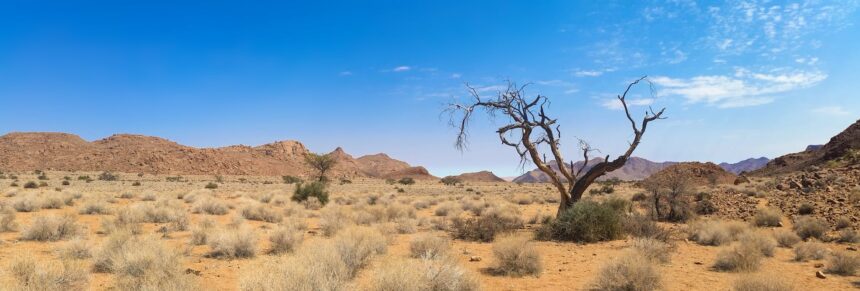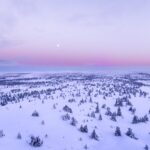Africa is a land of stunning natural beauty and incredible biodiversity. From vast savannahs to lush rainforests, this continent is home to some of the most spectacular national parks in the world. These protected areas serve as a sanctuary for countless species of animals and plants, providing them with a safe habitat to thrive. In this article, we will explore the top 10 largest national parks in Africa, showcasing their unique features, wildlife, and conservation efforts.
1. Serengeti National Park (Tanzania)
Size: Approximately 14,763 square kilometers
Located in Tanzania and extending into Kenya’s Maasai Mara Reserve, Serengeti National Park is undoubtedly one of Africa’s most famous wildlife destinations. Its name originates from the Maasai word “Siringet,” which translates to “endless plains.” The park’s vast grasslands are teeming with diverse wildlife species as it hosts the annual great migration of wildebeests.
Some remarkable features of Serengeti National Park include:
- The Great Migration: Witnessing over two million wildebeests undertaking their annual journey across these plains is an awe-inspiring spectacle.
- Big Five Sightings: The park offers excellent opportunities for encounters with lions, leopards, elephants, buffalos, and rhinoceros.
- Ngorongoro Crater: Adjacent to Serengeti National Park lies this massive volcanic crater that forms a natural enclosure for numerous animals.
2. Ruaha National Park (Tanzania)
Size: Approximately 20,226 square kilometers
Ruaha National Park spans over an area larger than some countries like Cyprus or Qatar. Situated in central Tanzania along the Great Rift Valley’s eastern escarpment, it boasts diverse landscapes encompassing open savannahs intersected by rivers and dotted with rocky outcrops.
Key highlights of Ruaha National Park include:
- Variety of Wildlife: The park is home to an abundance of African elephants, buffalos, lions, leopards, and other iconic species.
- Birdwatching Wonderland: Bird enthusiasts will find pleasure in observing over 570 bird species that call this park their home.
- Stunning Landscapes: From vast plains to rolling hills and magnificent baobab trees, Ruaha’s scenery is truly captivating.
3. Central Kalahari Game Reserve (Botswana)
Size: Approximately 52,800 square kilometers
Located in the Kalahari Desert in Botswana, the Central Kalahari Game Reserve stands as one of Africa’s largest protected areas. This vast expanse offers a stark contrast to the typical safari experience due to its unique arid ecosystem.
Notable features of the Central Kalahari Game Reserve include:
- Wilderness Experience: The reserve immerses visitors into remote and untouched landscapes where they can witness wildlife resilience in a challenging environment.
- San Bushmen Culture: Interact with local communities like the San Bushmen who have inhabited this region for thousands of years.
- Rare Species Sightings: Discover rare desert-adapted animals such as brown hyenas, honey badgers, cheetahs and black-maned lions.
4. Kruger National Park (South Africa)
Size: Approximately 19,485 square kilometers
Stretching across northeastern South Africa into Zimbabwe and Mozambique, Kruger National Park is undoubtedly one of Africa’s most iconic wildlife destinations. As one of the oldest national parks on the continent established in 1898, it showcases a rich history intertwined with conservation efforts.
Key attractions within Kruger National Park include:
- Rhino Conservation: This park plays a crucial role in protecting endangered rhinoceros species, particularly the white and black rhinos.
- Guided Safari Experiences: Visitors can embark on thrilling game drives, guided walks, or even immersive wilderness trails led by experienced rangers.
- Private Reserves: Adjacent to the park are several private reserves offering exclusive safari experiences and luxurious accommodation options.
5. Etosha National Park (Namibia)
Size: Approximately 22,270 square kilometers
Etosha National Park in Namibia boasts a unique landscape dominated by a vast salt pan that occasionally holds water. This natural phenomenon attracts diverse wildlife, creating incredible opportunities for animal sightings.
Notable features of Etosha National Park include:
- Waterholes: The park’s numerous natural and artificial waterholes provide ideal spots for observing animals as they come to quench their thirst.
- Unique Adaptations: Witness how animals have adapted to arid conditions in this region, such as the famous desert-adapted elephants.
- Nighttime Wildlife Encounters: Experience special guided night drives where guests can witness nocturnal creatures coming out from their hiding places.
6. South Luangwa National Park (Zambia)
Size: Approximately 9,050 square kilometers
South Luangwa National Park in Zambia is renowned for its unspoiled wilderness and abundance of wildlife along the Luangwa River. This park offers visitors an authentic safari experience amidst breathtaking landscapes.
Key highlights of South Luangwa National Park include:
- Walking Safaris: Embark on thrilling walking safaris guided by expert rangers who share their insights into the intricate details of the ecosystem.
- Leopard Capital: The park has earned its reputation as one of Africa’s best places to spot leopards due to their high density within its boundaries.
- Birdwatching Paradise: With over 400 bird species recorded here, South Luangwa offers ample opportunities for bird enthusiasts.
7. Hwange National Park (Zimbabwe)
Size: Approximately 14,650 square kilometers
Situated in northwest Zimbabwe, Hwange National Park is the country’s largest protected area and a significant player in African wildlife conservation. The park encompasses diverse habitats, including mixed woodland, open grasslands, and arid desert-like areas.
Key attractions within Hwange National Park include:
- Elephant Haven: Renowned for its large elephant population, this park offers fantastic opportunities to observe these gentle giants up close.
- Painted Dog Conservation: Hwange plays an essential role in safeguarding one of Africa’s most endangered species – the African painted dogs.
- Alternative Safaris: In addition to traditional game drives and walking safaris, visitors can also embark on horseback or camelback safaris here.
8. Chobe National Park (Botswana)
Size: Approximately 11,700 square kilometers
Located in northern Botswana along the Chobe Riverbanks and bordering Namibia’s Caprivi Strip region, Chobe National Park is famous for its impressive elephant herds and diverse wildlife concentrations.
Highlights of Chobe National Park include:
- River Safari: Traverse the waters of the Chobe River aboard a boat or ferry where you can observe elephants bathing and buffalo herds crossing.
- Predator Encounters: The park hosts a healthy population of lions as well as various other predators such as leopards and cheetahs.
- Spectacular Birdlife: Spot an array of bird species including fish eagles, kingfishers, bee-eaters amid riverine forests along the waterways.
9. Tsavo East/West (Kenya)
Size: Combined approximately 22,812 square kilometers
Tsavo East and West together form Kenya’s largest national park complex covering an area larger than some countries. These parks are divided by the Nairobi-Mombasa Highway and have distinct characteristics.
Notable features of Tsavo East and West include:
- Red Elephants: Tsavo National Parks are home to “red elephants” – elephants covered in reddish-brown dust as a result of frequent wallowing in the region’s iron-rich soils.
- Mudanda Rock: Located in Tsavo West, this massive rock provides panoramic views of the surrounding plains and often attracts thirsty wildlife to its natural top reservoir.
- Shetani Lava Flow: Witness the volcanic remnants from ancient lava flows that span across vast areas within Tsavo National Parks.
10. Kafue National Park (Zambia)
Size: Approximately 22,400 square kilometers
Kafue National Park is Zambia’s largest protected area lying in the heart of the country. This vast expanse encompasses diverse habitats ranging from riverine forests to open grasslands.
Key features of Kafue National Park include:
- Diverse Ecosystems: Explore a wide range of ecosystems that support various habitats for wildlife, including wetlands, dambos, and miombo woodlands.
- Rarities Unveiled: Discover rare antelope species like Roan antelopes and Sable antelopes that can be found within this park.
- Boating Safaris: Venture along Kafue River on boat safaris where you can spot hippos, crocodiles, birdlife as well as terrestrial animals drinking at water’s edge.
Conclusion
This list provides an overview of some of Africa’s largest national parks, each offering unique attractions and conservation efforts. From witnessing incredible wildlife spectacles like the Great Migration in Serengeti to exploring remote arid landscapes in Central Kalahari Game Reserve or enjoying close encounters with endangered species such as African painted dogs in Hwange – Africa has an abundance of natural wonders waiting to be explored. Whether you are a seasoned wildlife enthusiast or embarking on your first safari adventure, visiting any of these parks will undoubtedly leave you with awe-inspiring memories that will last a lifetime.
Remember to plan your visits responsibly by considering local regulations and guidelines, respecting the wildlife and their habitats. By engaging in sustainable tourism practices, we can ensure the protection of these incredible national parks for generations to come.







